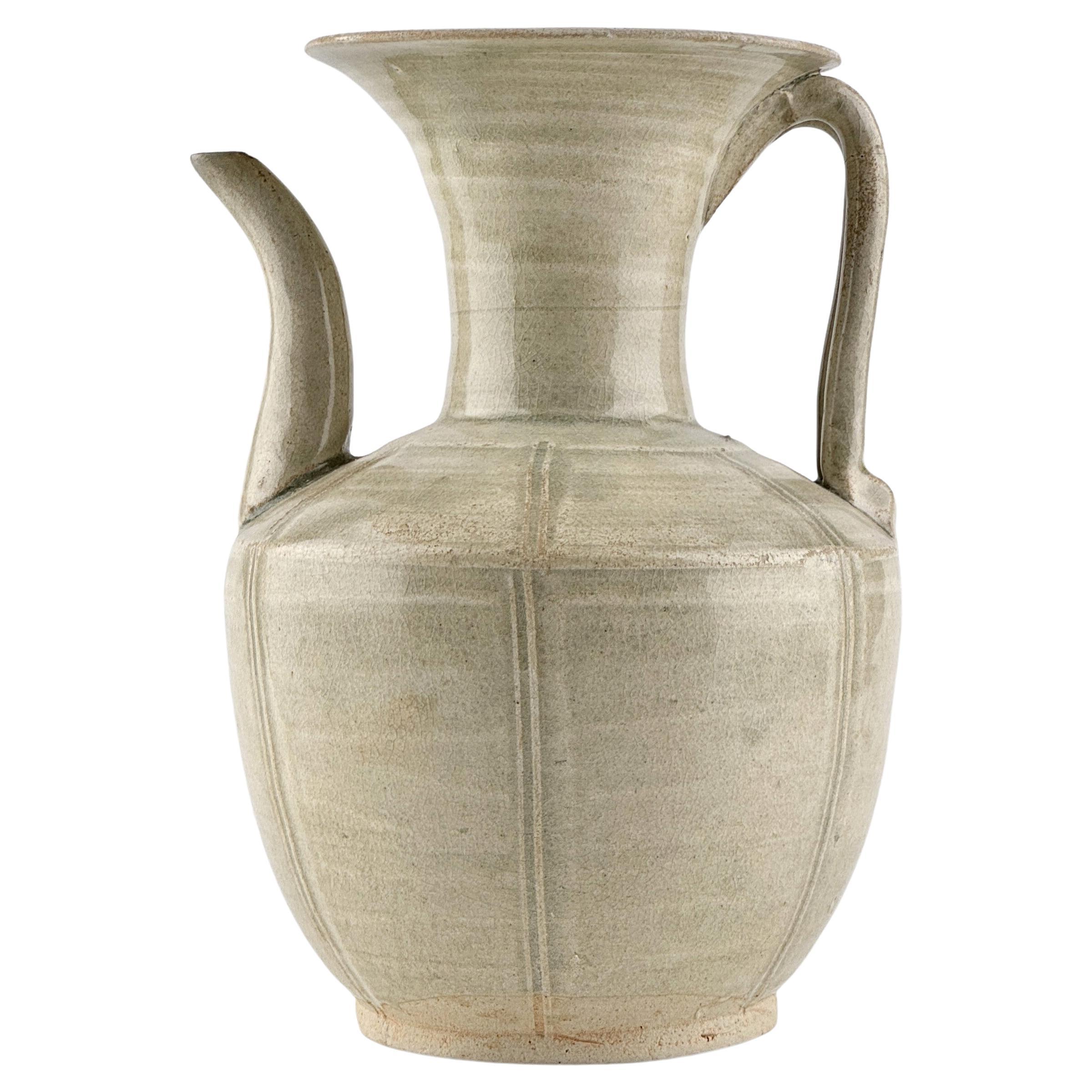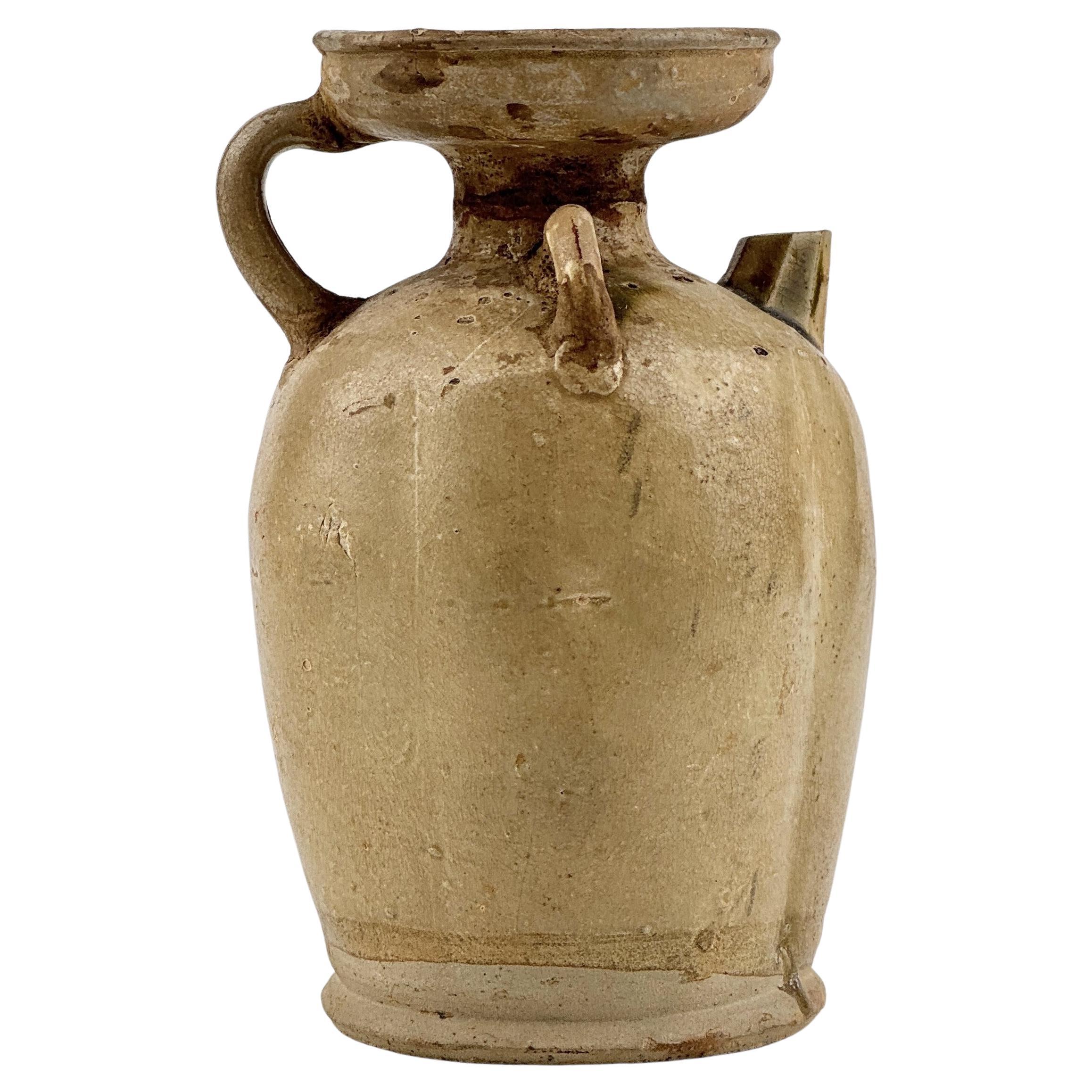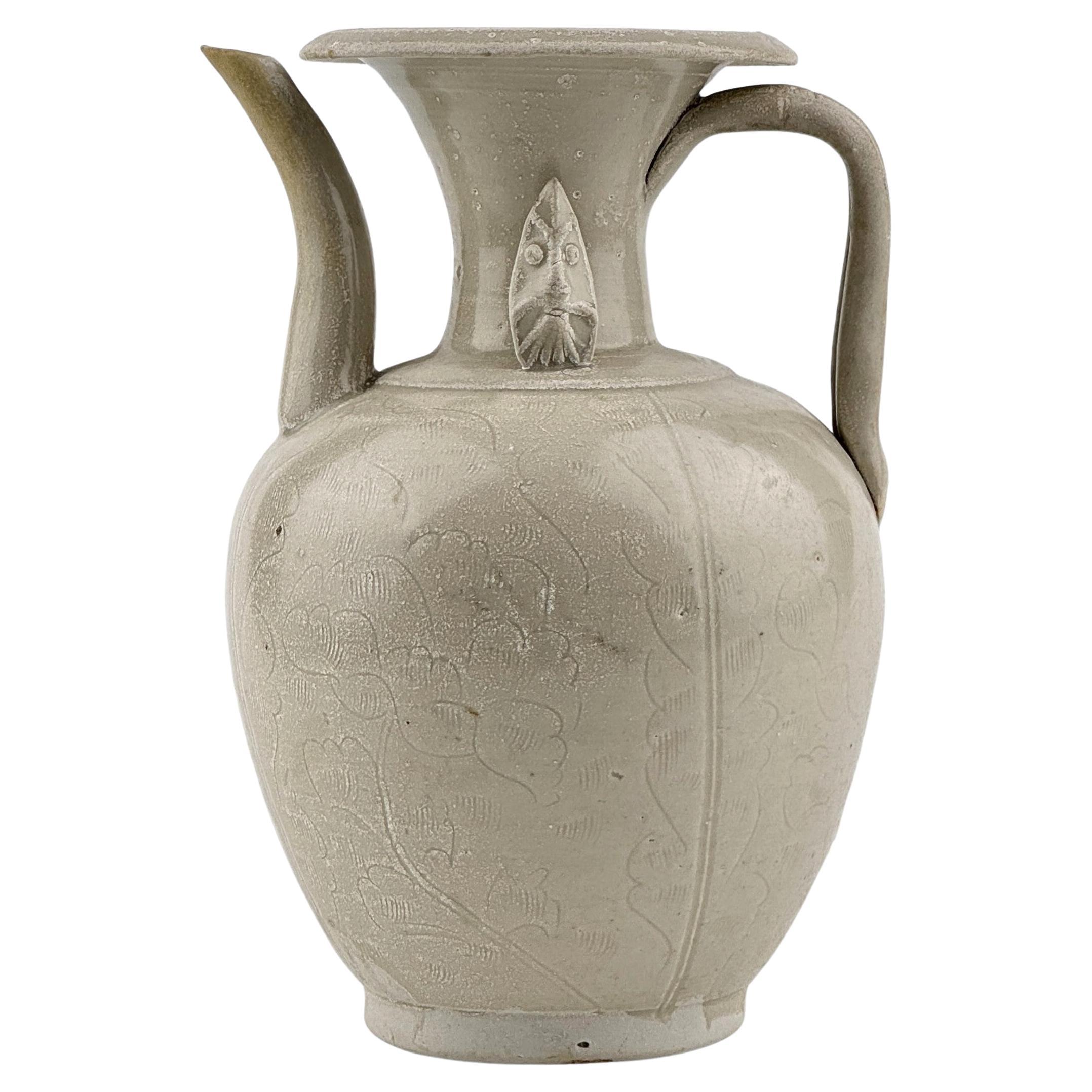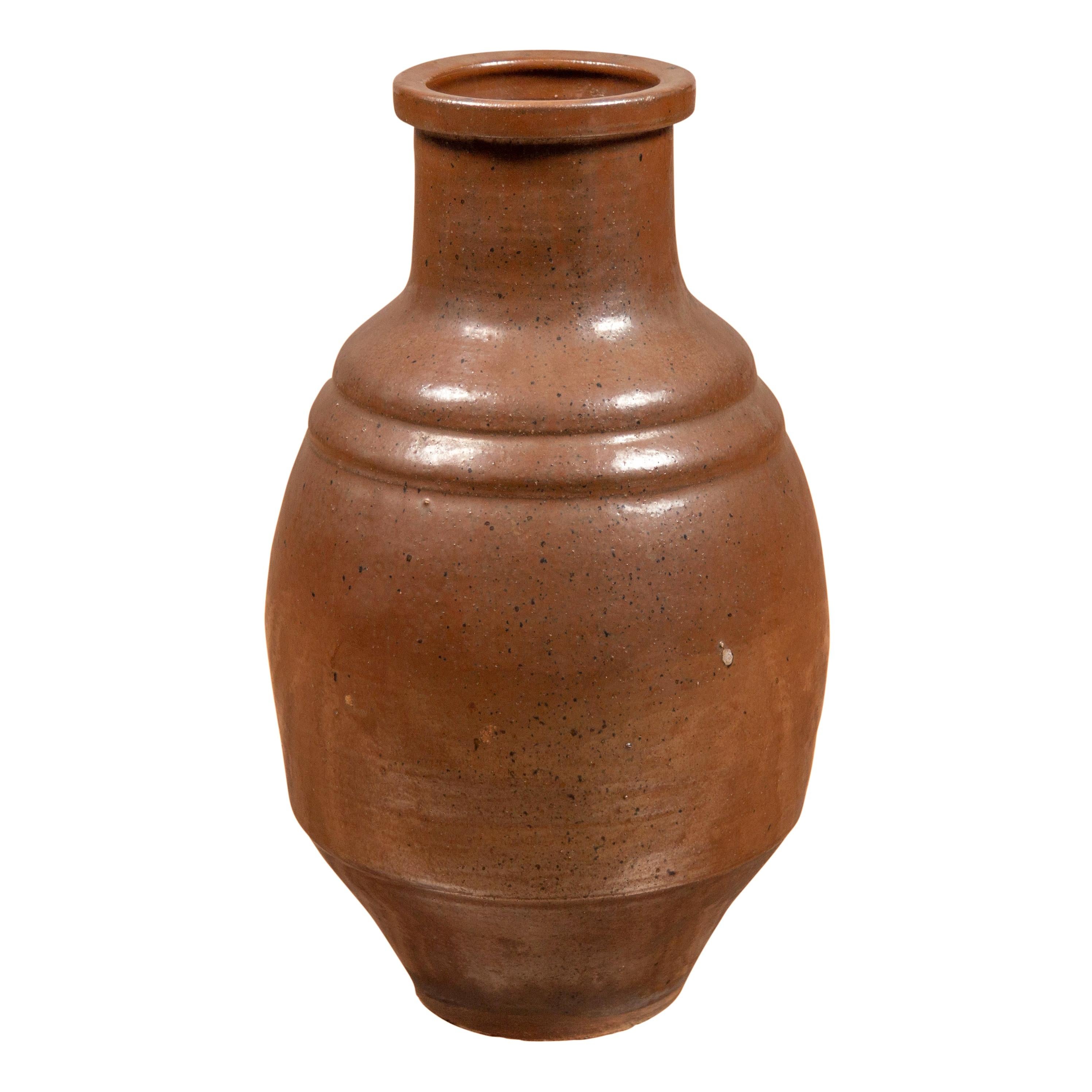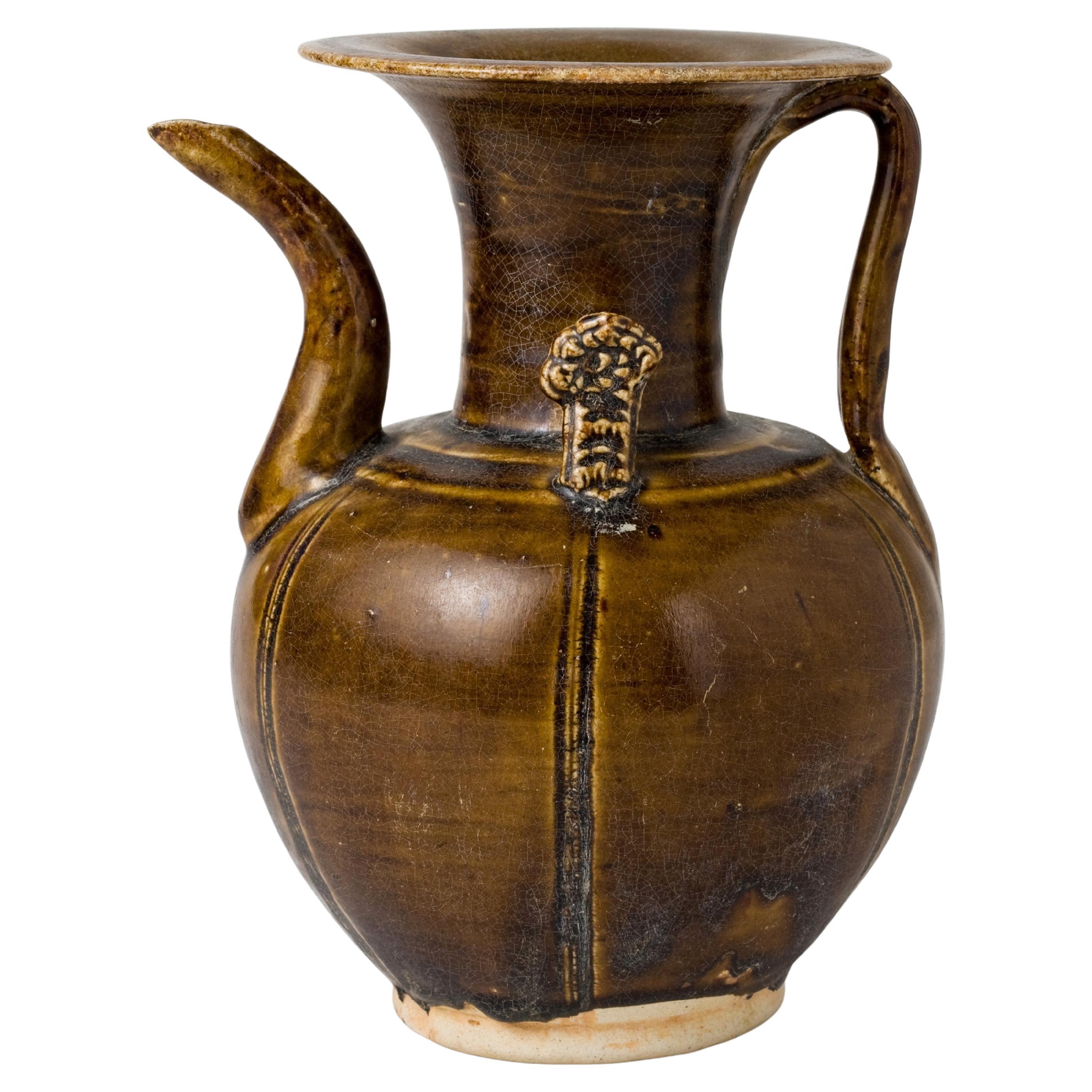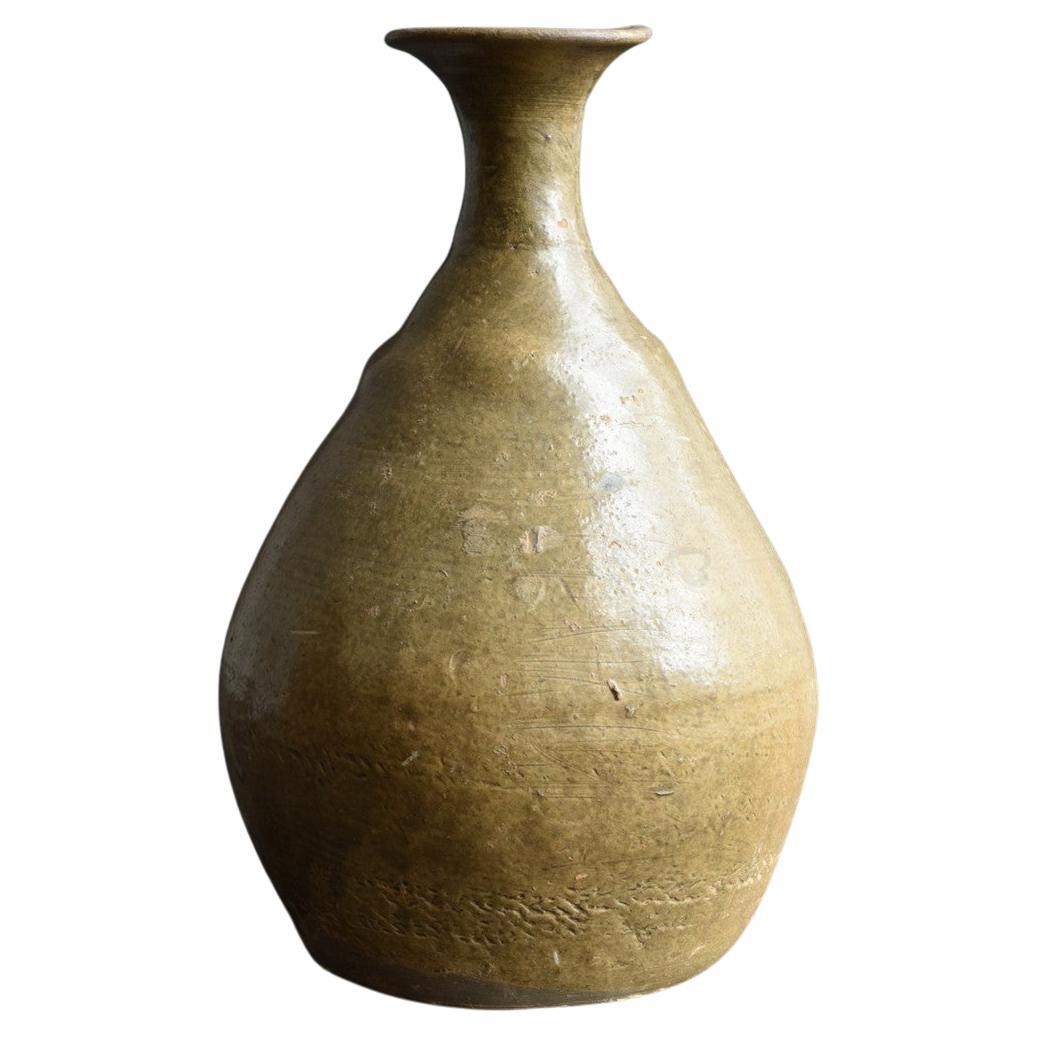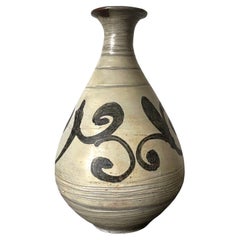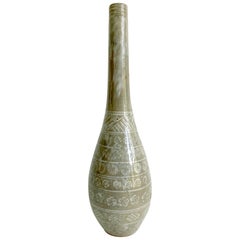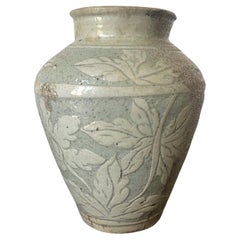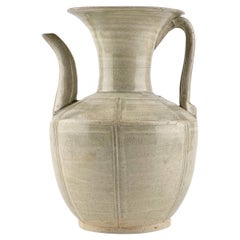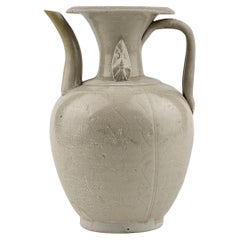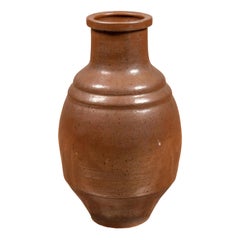Items Similar to Japanese Ko-Seto Stoneware Ewer with Carved Design
Want more images or videos?
Request additional images or videos from the seller
1 of 21
Japanese Ko-Seto Stoneware Ewer with Carved Design
$9,800
£7,439.99
€8,509.76
CA$13,692.02
A$15,228.52
CHF 7,951.86
MX$185,314.84
NOK 101,557.36
SEK 95,242.89
DKK 63,511.64
Shipping
Retrieving quote...The 1stDibs Promise:
Authenticity Guarantee,
Money-Back Guarantee,
24-Hour Cancellation
About the Item
On offer is a rare Ko-seto (old seto) stoneware ewer from Kamakura period (12-14th century) Japan. The exceptionally heavily potted ewer is made of stoneware. The main body was likely hand-coiled with individually built handle, sprout and wheel-made neck and mouth assembled. It takes the basic form from the contemporary Chinese ewer of Song Dynasty. The body was decorated with large carved chrysanthemums with petals surrounding the bottom of the neck and the base. It was washed in a yellow glaze (ko-seto was one the place first used glaze), the color was known as "dead leaf brown". The glaze now showcases an even effect of small crackles. The base was quite scorched and uneven from the residues during kiln firing. There is an old thin vein of kintsugi repair around the sprout, the end of which has a historical chip is uneven to the touch.
While the Ko-seto stoneware jar (heishi) are more commonly preserved from the period, the handled ewer that derived from the Chinese form is rather obscure. An intact Sue stoneware ewer of a similar form from Heian Period (10-11th century) was excavated at Maebashi in Gumma Prefecture in 1961 (see last picture).
For a Ko-seto jar with carved design and similar glaze, see item 1991.6 in the collection of Asian Art Musuem in San Francisco. Item AFI.14.2016 in the collection of Birmingham Musuem of Art
- Dimensions:Height: 11 in (27.94 cm)Diameter: 6.5 in (16.51 cm)
- Style:Archaistic (Of the Period)
- Materials and Techniques:Stoneware,Glazed
- Place of Origin:
- Period:
- Date of Manufacture:13th-14th Century
- Condition:Repaired: Ab historical Kintsugi repair around the sprout. Wear consistent with age and use. Minor losses. Overall fine condition. Old chip at the end of the sprout as shown.
- Seller Location:Atlanta, GA
- Reference Number:1stDibs: LU945031270192
About the Seller
4.9
Platinum Seller
Premium sellers with a 4.7+ rating and 24-hour response times
Established in 2006
1stDibs seller since 2010
564 sales on 1stDibs
Typical response time: <1 hour
- ShippingRetrieving quote...Shipping from: Atlanta, GA
- Return Policy
Authenticity Guarantee
In the unlikely event there’s an issue with an item’s authenticity, contact us within 1 year for a full refund. DetailsMoney-Back Guarantee
If your item is not as described, is damaged in transit, or does not arrive, contact us within 7 days for a full refund. Details24-Hour Cancellation
You have a 24-hour grace period in which to reconsider your purchase, with no questions asked.Vetted Professional Sellers
Our world-class sellers must adhere to strict standards for service and quality, maintaining the integrity of our listings.Price-Match Guarantee
If you find that a seller listed the same item for a lower price elsewhere, we’ll match it.Trusted Global Delivery
Our best-in-class carrier network provides specialized shipping options worldwide, including custom delivery.More From This Seller
View AllKorean Glazed Ceramic Vase Buncheong Ware Early Joseon Dynasty
Located in Atlanta, GA
An antique Korean Buncheong stoneware vase from early Joseon Dynasty circa late 15th to early 16th century. The vase is of a classic pear form with a ...
Category
Antique 15th Century and Earlier Korean Archaistic Ceramics
Materials
Ceramic
Korean Glazed Ceramic Vase Buncheong Ware Joseon Dynasty
Located in Atlanta, GA
A small antique Korean Buncheong stoneware vase from early Joseon Dynasty circa 16th century. The vase is of a classic pear form with a waisted neck, a flared mouth and a ringed base...
Category
Antique 16th Century Korean Other Ceramics
Materials
Ceramic
Japanese Mishima Ceramic Vase Meiji Period
Located in Atlanta, GA
A Japanese long neck slender ceramic vase in the style of Mishima, circa 19th century, Meiji period. Mishima pottery was originally imported from three islands in Taiwan and then fro...
Category
Antique 19th Century Japanese Japonisme Ceramics
Materials
Ceramic
Antique Korean Buncheong Ceramic Vase with Incised Designs
Located in Atlanta, GA
A Korean ceramic bottle form jar of Buncheong ware circa 15-16th century Joseon Dynasty. The surface of the jar features a celadon glaze and an elaborate incised design of large flor...
Category
Antique 16th Century Korean Archaistic Ceramics
Materials
Ceramic
Japanese Ceramic Sake Bottle Chosen Karatsu Ware
Located in Atlanta, GA
The long neck bottle of classic form was heavily potted with coarse clay with high iron content. The flask, circa 18th century Edo period, was purposed for sake storage but also substituted as a flower vase during tea ceremony. The surface is covered in glossy black glaze and contrasts strikingly with white ash glaze around the shoulder. The white, fired with straw, displays a splashing feather effect and fine crackles, blending in with the black artistically. This type of Karatsu ware...
Category
Antique 18th Century Japanese Japonisme Ceramics
Materials
Ceramic
Japanese Satsuma Ceramic Ewer Yabu Meizan
By Yabu Meizan
Located in Atlanta, GA
A Satsuma ware miniature ewer from the studio of Yabu Meizan (birth name Yabu Masashichi; 1853-1934), who was one of the most celebrated and collectible Satsuma artists from the Meij...
Category
Early 20th Century Japanese Japonisme Ceramics
Materials
Ceramic
You May Also Like
A Zhejiang Porcelain Ewer, Northern Song Dynasty
Located in seoul, KR
The oviform body is divided into few lobes. All covered in a finely crackled pale olive-green glaze. The surface and glaze characteristics are definitive, confirming the authenticity...
Category
Antique 15th Century and Earlier Hong Kong Antiquities
Materials
Porcelain
$2,925 Sale Price
35% Off
Changsha Ewer, Tang Dynasty
Located in seoul, KR
It features two small lug handles on either side of the neck and a spout opposite the main handle. This ewer might have been used for wine or other liquids, which were poured through...
Category
Antique 15th Century and Earlier Hong Kong Tang Antiquities
Materials
Pottery, Stoneware
$1,516 Sale Price
60% Off
Qingbai Melon form water ewer, Five Dynasties-Northern song dynasty
Located in seoul, KR
The oviform body is divided into few lobes, and the shoulder is applied with a pair of small loops molded.
Period : Five Dynasties-Song Dynasty(907~1279)
Type : Ewer
Medium : Zheji...
Category
Antique 15th Century and Earlier Hong Kong Antiquities
Materials
Porcelain
$1,495 Sale Price
50% Off
Japanese Tamba Tachikui Ware Monochrome Brown Glazed Water Jug, 19th Century
Located in Yonkers, NY
A Japanese Tamba Tachikui ware brown glazed water jug from the 19th century. This exquisite 19th century Japanese Tamba Tachikui ware water jug enchants with its understated elegance and monochrome brown glaze. Crafted in one of Japan’s six renowned ancient kilns, this jug showcases a beautifully circular body that gracefully narrows into a slender neck, adorned with ribbed accents that add subtle texture to its surface. The protruding lip, delicately formed, contributes to the jug's overall harmonious silhouette, embodying a sense of refined simplicity and traditional craftsmanship.
With its rich, deep brown hue, the jug’s glaze captures the essence of natural earth tones, creating a warm and inviting presence. This Tamba ware...
Category
Antique 19th Century Japanese Ceramics
Materials
Ceramic, Pottery
Brown Glazed Ceramic Ewer, Five Dynasties-Song Dynasty
Located in seoul, KR
The glaze crackles, reflecting the passage of time, add to the piece's antique charm. The spout and handle are well-proportioned, and the brown glaze is evenly applied, the unique fi...
Category
Antique 15th Century and Earlier Hong Kong Antiquities
Materials
Ceramic
$5,600 Sale Price
30% Off
Korean Very Old Pottery Vase/10th Century to 14th Century/Goryeo Dynasty
Located in Sammu-shi, Chiba
This is Korean pottery made between the 10th century and the 14th century.
At that time, it was called the Goryeo Dynasty, and various objects such as metalwork and pottery were mad...
Category
Antique 15th Century and Earlier South Korean Other Vases
Materials
Pottery
More Ways To Browse
Antique Carved Japanese Furniture
Decorated Stoneware
Kiln Japanese
11th Century
Japanese Stoneware
Antique Ewer
Song Ceramics
Large Japanese Jars
Japanese Jar Large
Japanese Crackle
11th Century Furniture
Song Dynasty Ceramics
Chinese Ceramics Song Dynasty
14th Century China
Chinese 14th Century
Antique Stoneware Jars
Antique Japanese Stoneware
Kintsugi Japan
